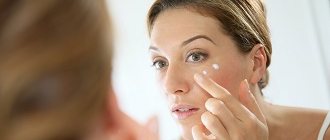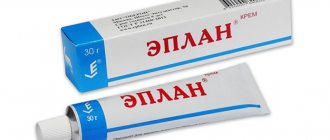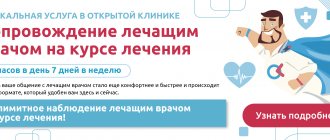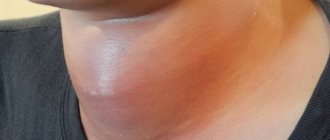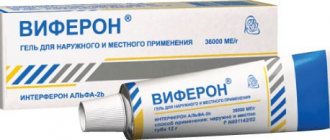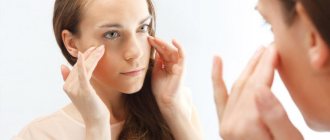The article presents the results of a post-marketing multicenter clinical and laboratory study of the drugs Eplan ointment and Eplan solution, intended for the local treatment of skin and soft tissue infections (SSTI) in outpatient, inpatient and military field conditions. The results of the study in 793 patients with SSTIs of various locations and origins demonstrate the high clinical effectiveness of the drugs along with their convenient dosage form and economic accessibility.
L.A. Blatun1, V.A. Mitish1, R.P. Terekhova1, I.A. Grishina1, A.A. Alekseev1, A.I. Kirienko2, L.I. Bogdanets2,
Yu.S. Titkova3, A.A. Novozhilov4, S.V. Smirnov5, V.S. Borisov5, V.T. Palchun6, T.S. Polyakova6, L.A. Luchikhin6,
M.S. Bardychev7, V.G. Fradkin8, K.A. Teterin9, O.V. Yarustovskaya10, L.P. Markina10, L.S. Alisultanova10, I.S. Abramov11, I.A. Butivshchenko11, V.A. Novikov12, V.G. Zinger13, L.G. Petryakina13, T.F. Bystritskaya 14,
V.N. Grebenyuk14, T.I. Stepchenkova14, N.N. Chernakova14, M.S. Mokrousov14, N.N. Zakharchenko15, Kh.Kh. Majid15,
I.P. Poleshchuk16, A.P. Gorshkov17, N.A. Vorotyagina17, O.A. Vasnetsova.18
1Department of Wounds and Wound Infections, Federal State Budgetary Institution “Institute of Surgery named after. A.V. Vishnevsky" of the Ministry of Health of Russia, Moscow;
2GBUZ “City Clinical Hospital No. 1 named after. N.I. Pirogov", Faculty Surgery Clinic of the State Budgetary Educational Institution of Higher Professional Education "Russian National Research Medical University named after. N.I. Pirogov" of the Ministry of Health of Russia, City Phlebological Consultative and Diagnostic Center, Moscow;
3Department of Skin and Sexually Transmitted Diseases, Moscow State Medical and Dental University. A.I. Evdokimov" of the Ministry of Health of Russia;
416th department of purulent surgery of the Federal State Institution “Main Military Clinical Hospital named after. acad. N.N. Burdenko" Russian Ministry of Defense, Moscow;
5 Department of Acute Thermal Injuries of the State Budgetary Healthcare Institution “Research Institute of Emergency Medicine named after. N.V. Sklifosovsky DZ, Moscow";
6Department of Otorhinolaryngology, Faculty of Medicine, State Budgetary Educational Institution of Higher Professional Education, Russian National Research Medical University named after. N.I. Pirogov Ministry of Health of Russia, Moscow;
7Department of Surgical and Conservative Treatment of Radiation Injuries of the Federal State Budgetary Institution “Medical Radiological Research Center” of the Ministry of Health of Russia, Obninsk;
8radiology department of the Moscow Regional Oncology Center, Balashikha;
9radiological Ministry of Defense of Russia, Moscow;
10Department of Gynecology, Federal State Budgetary Institution "Russian Scientific Center for Medical Rehabilitation and Balneology" of the Ministry of Health of Russia, Moscow;
1117th surgical department of the State Budgetary Healthcare Institution “City Clinical Hospital No. 15 named after. O.M. Filatova DZ Moscow";
12FGKU “Polyclinic No. 5” FSB of Russia, Moscow;
13 otorhinolaryngological department of the Moscow Regional Research Clinical Institute named after. M.F. Vladimirsky";
14 State Budgetary Institution "Dermatovenerologic Dispensary No. 8", Moscow;
15 GBUZ “Dermatovenerologic Dispensary No. 19”, Moscow;
16State Central Airmobile Rescue Squad of the Ministry of Emergency Situations of Russia, Moscow;
17Federal State Unitary Enterprise "State Research Institute of Organic Chemistry and Technology", Moscow;
18Department of Marketing and Merchandising in Healthcare, State Budgetary Educational Institution of Higher Professional Education “First Moscow State Medical University named after. THEM. Sechenov" of the Ministry of Health of Russia, Moscow.
INTRODUCTION
Surgical skin and soft tissue infections (SSTIs) are the most common reason for patients visiting a surgical hospital or clinic [1]. In 2004, in France, Germany, Italy, Spain, and Great Britain, 1.3 million patients were hospitalized for SSTIs, including cellulitis (52.7%), local surgical infection (15.8%), and diabetic foot ( 15.3%), bedsores (12%) [2]. According to expert estimates, in Russia SSTIs range from 480 to 700 thousand patients per year [3, 4].
As statistics showed in the 90s, about 12 million people were registered in Russia with bruises, wounds, crushes, up to 3 million with fractures, 1.5 million with thermal injuries. Every year, up to 1.5 million patients with trophic ulcers and about 500 thousand patients with diabetic foot syndrome turn to medical institutions for help. Up to 30% of patients with surgical pathology require specialized care for developed purulent-inflammatory processes.
Undoubtedly, nowadays, taking into account the increase in man-made, natural, road accidents and local military conflicts, the number of patients with purulent-inflammatory diseases has increased significantly. At the same time, local infectious complications in victims with polytraumas reach 34.4%, generalization of the infectious process – 5.5% [5].
When analyzing the frequency of postoperative complications in 16 surgical hospitals in Russia, it was revealed that the development of complications in the postoperative period leads to an increase in hospitalization time from 10.5 to 17.4 days during emergency operations, from 16.9 to 33.6 days during planned operations , from 13.6 to 22.8 days – in the group of patients who underwent abdominal surgery [6]. An increase in the length of hospital stay by 10 days leads to economic damage and an increase in treatment costs in European countries by an average of 2 thousand euros per patient [7].
From an etiological point of view, SSTIs are usually bacterial and in many cases polymicrobial. The most common causative agent of infection is S. Aureus
. Of particular concern is the recent widespread spread of oxacillin/methicillin-resistant staphylococci (MRSA), characterized by resistance to beta-lactam drugs and often to aminoglycosides, lincosamides, and fluoroquinolones.
Enterobacteriaceae family are widespread in medical institutions.
– producers of extended spectrum beta-lactamases (
Klebsiella
spp.,
Enterobacter
spp.,
E. Coli
), which are resistant to cephalosporins of II–IV generations [8].
When choosing antimicrobial chemotherapy, a differentiated approach to the selection of drugs is extremely important, depending on the level of soft tissue damage, the characteristics of the clinical course of the disease, and increasing multidrug resistance must also be taken into account [9].
Even with adequate systemic antibacterial therapy, mortality in generalized SSTIs can reach 50% or more (with necrotic infections) [10–12]. The high frequency of generalization of the infectious process observed in recent years, even with local forms of SSTI, is due to the rapid increase in resistance not only to the most common systemic antibacterial agents in hospitals, but also to traditional drugs used for local treatment.
We must constantly remember that any wound, regardless of its location and the cause of its appearance, always initially contains a different number of microorganisms (primary microbial contamination). The main purpose of any primary dressing used at home, by emergency or military service doctors, outpatient or inpatient doctors, is to stop bleeding and prevent wound infection or maximize the destruction of microorganisms that have accidentally entered the wound. Subsequently, treatment of any wound is carried out in accordance with the phase of the wound process and the species composition of microbes growing in it.
In the last two decades, in the treatment of purulent-inflammatory processes, purulent wounds of various locations and origins, solutions of new antiseptics (1% iodopirone; 0.01% miramistin; 1%, 0.5% dioxidin; 0.1; 0.2% Lavacept). Ineffective lanolin-vaseline-based ointments (Vishnevsky ointment, ichthyol ointment, streptocidal ointment, erythromycin ointment, tetracycline ointment, furacilin ointment, etc.) have been almost completely replaced from the practice of treating patients with SSTIs. These drugs were replaced by polyethylene glycol (PEG)-based ointments (levosin, levomekol, dioxykol, 5% dioxidine ointment, stellanin-PEG 3%, oflomelid, baneocin, etc.). Preparations containing polyhexanide (prontosan solution, gel) show high efficiency in the treatment of chronic foci of infection complicated by microbial biofilms [13–18]. However, we have to admit that for various reasons (usually beyond the wishes of practitioners), these drugs are supplied to hospitals, emergency rooms and clinics in negligible quantities.
Also, in recent years, we have to observe with regret how our domestic pharmaceutical industry has unreasonably reduced or completely stopped the production of domestic medicines, dressings for the treatment of wounds, which have no analogues abroad, but have confirmed their high effectiveness in helping the wounded in Afghanistan, Arzamas, Ufa, Spitak and other mass casualties of the population (explosions of houses in Moscow, in the metro, etc.). For example, the production of most PEG-based ointments has almost completely ceased. Of the large number of these drugs, only levomekol and 5% dioxidine ointment remained. Foaming aerosols (dioxysol, gentazol, nitazol) are no longer produced. Hydrocolloids (galagran, galactone) have disappeared from pharmacies, collagen-based wound coverings with gentamicin (gentacycol), etc. are no longer available. Of course, some things are being actively introduced into our practice by various foreign pharmaceutical companies. But their developments are extremely expensive and are not always designed for the specifics of our medical institutions.
In the last 5–7 years, several new domestic drugs have been proposed for the treatment of various wounds: fusimet ointment, streptolaven ointment, stellanin-PEG ointment 3%, oflomelid ointment. But the process of introducing these drugs into practical healthcare is still hampered by the lack of support from the governing structures of the Russian Ministry of Health.
In the early 2000s, the research and production enterprise Oberon CJSC (Russia), VPK, based on glycolan, developed and registered:
Eplanol solution 8.5% containing: glycolan, triethylene glycol, ethylcarbitol, glycerin, sodium hydroxide, water (GOST R 51 379–2000);
Eplanol ointment 6.8% , containing: glycolan, triethylene glycol, ethylcarbitol, glycerin, sodium hydroxide, polyethylene oxide-400 (GOST R 52 343–2005).
Extensive experimental studies on animals have shown that these new drugs have simultaneously analgesic, wound-healing, antimicrobial and antitumor activity [19–24]. The antimicrobial effect of the drugs is due to the presence of glycolan in their composition (a complex compound of lanthanum nitrate and triethylene glycol - La(NO3)3С6Н14О4 n
H2O).
Lanthanum is one of the representatives of the family of rare earth metals (lanthanides), necessary for the normal functioning of the body. Lanthanides are capable of forming complexes with carbohydrates, amino acids, hydroxy acids, nucleotides, phosphatides, and vitamins. They influence various stages of the blood coagulation process: they inhibit thrombin synthesis, act as Ca2+ antimetabolites, displacing it from systems with one or more protein coagulation factors; through mast cells, they increase the level of free heparin in the blood when administered in sufficiently large doses, and are capable of increasing the phagocytic activity of blood leukocytes [25, 26].
Almost half of the radioactive isotopes used in oncological treatment of tumors are lanthanides. Recently, antitumor activity has also been discovered in stable isotopes of lanthanides. Lanthanides can accumulate in tumors in large quantities and disrupt the metabolism of calcium, magnesium, and phosphorus in them.
Lanthanum ions have a high affinity for phospholipids and “stabilize” cell membranes, blocking ion cells; this effect of lanthanides on the site of inflammation is similar to the effect of corticosteroids.
However, large-scale clinical and laboratory studies of these drugs for the treatment of SSTI have not been conducted. In this connection, the materials presented in this article seem extremely relevant.
Table 1.
Antimicrobial activity of the drug Eplan - solution and ointment and Levomekol ointment (zones of inhibition of the growth of microorganisms in mm).
Note.
The absence of growth inhibition zones around the socket, as well as a growth inhibition zone of up to 10 mm, were considered as lack of sensitivity to the drug; zones of growth retardation with a diameter of 11–15 mm were considered to be of low sensitivity; zones of growth inhibition with a diameter of 15–25 mm were considered to indicate high sensitivity.
Eplan solution fl-cap 20ml No. 1
Compound
100 g of liniment contain 8.5 g of glycolan, triethylene glycol, ethyl carbitol, glycerin, and water. 100 g of cream contains glycolan 7.2 g, polyethylene glycol, triethylene glycol, ethyl carbitol, glycerin.
Pharmacokinetics
The drug has simultaneously effective wound healing, regenerating, bactericidal, analgesic, protective and softening effects. Prevents infection, accelerates the healing of wounds, thermal and chemical burns, and pustular skin lesions.
Made on the basis of lanthanum salt and polyhydroxy compounds without the use of antibiotics, hormonal and analgesic agents.
Indications for use
Solar, thermal, chemical burns and frostbite, bruises, wounds, cuts, abrasions, abrasions, cracks. Early and late radiation damage to the skin. Trophic ulcers and bedsores. Psoriasis. Pyoderma (staphylococcal and streptococcal), microbial eczema, dyshidrosis complicated by secondary infection. Viral infection (herpes, warts, condylomas, papillomas). Acne vulgaris. Diseases: Nose (boils, sycosis, eczema, burns and traumatic injuries). External and middle ear (otitis, otomycosis, etc.). Relieving swelling and itching of the skin of various origins, including insect bites (mosquitoes, wasps, bees, etc.). Preventive protection of the skin from exposure to chemicals and aggressive environments (including detergents, fertilizers, solvents, etc.). Eplan is effective for similar diseases in domestic animals.
Contraindications
Hypersensitivity to individual components of the drug.
Directions for use and doses
Burns, minor wounds, bruises, abrasions and other skin injuries
Lubricate the damaged area and, as it absorbs and dries, the treatment is periodically repeated until complete healing.
In case of significant damage (purulent wounds, ulcers, bedsores, burns, frostbite)
A sterile gauze soaked in the drug is applied to the damaged surface and secured with a light bandage. The wound is treated daily or every other day.
Preventive skin protection from chemicals
The cream is evenly applied to the surface of the skin. A single prophylactic dose of the drug involves treating hands with a consumption rate of 0.2 g/dm2. The optimal effect is achieved by using the product twice a day - before and after work. The protective effect is created immediately after application and lasts for a long time.
Storage conditions
Keep out of the reach of children.
Best before date
5 years.
special instructions
Eplan does not leave greasy stains on linen and clothes and thus does not create inconvenience in use. Eplan does not dry out and does not stick to the wound. Eplan can be used without restrictions for all age groups of the population. Eplan is practically harmless and has no contraindications for repeated and long-term use. Eplan has undergone a series of tests and studies at the country's leading medical institutes and has received high praise. Eplan has no analogues in Russia or abroad in terms of efficiency, multifunctionality and breadth of spectrum of action.
Side effects
Not identified. Eplan is non-toxic and has no contraindications for repeated and long-term use. No allergic reactions were noted.
Use during pregnancy and breastfeeding
There are no contraindications.
Overdose
No drug overdose has been identified.
RESULTS AND DISCUSSION
The high antimicrobial activity of Eplan ointment and solution in comparison with Levomekol ointment was revealed using the agar diffusion method (well method) on 90 hospital strains of gram-positive and gram-negative microorganisms and 10 strains of yeast-like fungi isolated from patients (Table 1).
When studying the antimicrobial activity of Eplan dosage forms for individual groups of microorganisms, it was revealed that the S. Aureus
50% are methicillin-resistant staphylococcus (MRSA), and the activity of the solution and ointment was as high as against
S. Epidermidis
.
Among Enterococcus
spp.
half of the strains were samples of E. Faecium
, highly resistant to most systemic antimicrobial drugs. The level of activity of 2 dosage forms of Eplan was also high.
Compared to Levomekol ointment, Eplan solution and ointment more actively suppress the growth of such problematic microorganisms as P. aeruginosa, Acinetobacter spp
.
All strains of microorganisms included in the study were hospital acquired. Using the disk diffusion method, their multiresistance to the main systemic antibacterial drugs was revealed. At the same time, the high sensitivity of these strains of both gram-positive and gram-negative microorganisms to Eplan solution and ointment was revealed, although among the studied group of intestinal and non-fermenting bacteria there were highly resistant strains of microbes - producers of extended spectrum beta-lactamases and metalloproteases.
In addition, high activity of Eplan solution and ointment against Candida
spp.
When studying the osmotic activity of Eplan ointment in comparison with a 10% sodium chloride solution using dialysis through a semi-permeable membrane, it was revealed that the greatest weight gain of the ointment was 2.2 g, while the maximum weight gain of a 10% sodium chloride solution was only 0.15 g for each gram of solution. It should be noted that the osmotic effect of the ointment manifested itself within 24 hours, and that of the hypertonic solution only within 30 minutes (see figure)
.
Rice. Osmotic activity of Eplan ointment and 10% sodium chloride solution.
Thus, the dehydrating activity of Eplan ointment is 13.5 times higher than that of a “standard” hypertonic NaCl solution, which promotes a more intense outflow of wound fluid from the depths of the wound into the dressing, and reduces swelling of the tissues surrounding the wound.
A clinical study of the effectiveness of Eplan solution and ointment was carried out in 16 hospitals across the country, treating 793 patients (Table 2)
.
Table 2.
List of medical institutions that conducted clinical studies of Eplan ointment and solution, and the number of patients in various clinical groups.
*Note.
- Department of Wounds and Wound Infections, Federal State Budgetary Institution “Institute of Surgery named after. A.V. Vishnevsky" Ministry of Health of Russia, Moscow.
- GBUZ "City Clinical Hospital No. 1 named after. N. I. Pirogov”, Faculty Surgery Clinic of the State Budgetary Educational Institution of Higher Professional Education, Russian National Research Medical University named after. N. I. Pirogova, City Phlebological Consultative and Diagnostic Center, Moscow.
- Department of Skin and Venereal Diseases of the State Educational Institution of Higher Professional Education “Moscow State Medical and Dental University named after. A.I. Evdokimov" of the Ministry of Health of Russia.
- 16th department of purulent surgery of the Federal State Institution “Main Military Clinical Hospital named after. acad. N. N. Burdenko" Russian Ministry of Defense, Moscow.
- Department of acute thermal injuries of the State Budgetary Healthcare Institution “Research Institute of Emergency Medicine named after. N.V. Sklifosovsky Department of Health, Moscow.”
- Department of Otorhinolaryngology, Faculty of Medicine, Russian National Research Medical University. N.I. Pirogov" Ministry of Health of Russia, Moscow.
- Department of surgical and conservative treatment of radiation injuries of the Federal State Budgetary Institution “Medical Radiological Research Center” of the Ministry of Health of Russia, Obninsk.
- Radiological Department of the Moscow Regional Oncology Center, Balashikha.
- Radiological Ministry of Defense of Russia, Moscow.
- Department of Gynecology, Federal State Budgetary Institution "Russian Scientific Center for Medical Rehabilitation and Balneology" of the Ministry of Health of Russia, Moscow.
- 17th surgical department of the State Budgetary Healthcare Institution “City Clinical Hospital No. 15 named after. O. M. Filatova Department of Health of Moscow.”
- FGKU "Polyclinic No. 5" FSB of Russia, Moscow.
- Otorhinolaryngology Department of the Moscow Regional Research Clinical Institute named after. M. F. Vladimirsky."
- GBUZ "Dermatovenerologic Dispensary No. 8", Moscow.
- GBUZ "Dermatovenerologic Dispensary No. 19", Moscow.
- State Central Airmobile Rescue Squad of the Ministry of Emergency Situations of Russia, Moscow.
In the treatment of patients with post-traumatic, post-operative purulent wounds
various localizations: diabetic foot syndrome, boils, paraproctitis, suppurating coccygeal cysts, abscesses, phlegmons, infected burns up to 10% of I–IIIA degrees, in all cases a clear positive effect of the drug Eplan on the wound process was obtained. Due to the high and long-term osmotic activity of Eplan ointment, on the 2nd–3rd day of treatment, the amount of free purulent discharge in the wound was significantly reduced. The swelling of the tissues surrounding the wound disappeared and by days 4–6 islands of granulation tissue appeared at the bottom of the wounds, the process of marginal epithelialization was activated, which made it possible to carry out further treatment under bandages with Eplan solution. Microbial contamination of wounds by the 4th–6th days of treatment decreased from a critical level of 105–8 CFU, when the threat of generalization of infection and the development of sepsis remained, to 101–2 CFU/ml.
In cytograms of wound prints before treatment of wounds under a bandage with Eplan ointment, an abundance of neutrophils (up to 100 or more in the field of view), the presence of microflora and its phagocytosis were revealed, which indicated an active inflammatory process. On the 5th–7th day of treatment with Eplan, the type of cytogram changed from inflammatory to regenerative-inflammatory or regenerative. During these treatment periods, active proliferation of fibroblasts (up to 10) and epidermocytes was observed. The clear positive dynamics of the wound process made it possible to carry out the final stage of surgical treatment at an earlier stage - placing early secondary sutures on the wound or performing various plastic surgeries to eliminate the wound defect.
When treating patients with thermal skin lesions
Thanks to the ability of Eplan ointment 6.8% to penetrate deep into the tissue, this drug contributed to the creation of antibacterial protection both on the surface and in the depths of the wound. This effect is especially important since systemic antibiotics, usually used in clinical practice, do not reach microorganisms in the necrosis zone, where microcirculation is impaired. It is important for the local treatment of a burn wound that when using Eplan ointment, the vapor tissue of the necrotic zone did not dry out due to the presence of alkaline components in the composition. Cells (damaged, but not killed) received better nutrition and partially restored their viability. The scab remained moist during processing, which contributed to its faster rejection.
The high effectiveness of the drug Eplan ointment 6.8% in the treatment of donor wounds was noted. The epidermis after epithelization of burn wounds was stronger and more elastic, and less susceptible to traumatic effects.
Thanks to the bactericidal activity of ethylcarbitol, which was complemented by the bacteriostatic effect of glycolan and triethylene glycol against gram-positive and gram-negative bacteria, the contamination of the burn surface with pathogenic flora sharply decreased, which was confirmed by the dynamics of bacteriological cultures from the wound surface. Bacteriological studies performed on patients in the study group revealed a diverse microflora ( S. aureus, P. aeruginosa, Enterococcus
spp.,
Streptococcus, S. Epidermidis
). During treatment, 100% of patients experienced elimination of microbes by the end of the study (the wounds turned out to be sterile). In addition, when using the drug Eplan, practically no new microorganisms appeared, i.e., there was no change in the species composition of the wound microflora.
The data from bacteriological studies correlated with the dynamics of indicators of cytological examination of wound prints taken from patients in the study group. In all patients, before starting to use the drug Eplan ointment 6.8%, the study revealed an inflammatory or inflammatory-degenerative type of cytogram. At the end of treatment, the type of cytograms changed to regenerative in 100% of cases, which was accompanied by the appearance of fibroblasts and macrophages with signs of phagocytosis in the wound discharge. Similar data from bacteriological and cytological studies indicated the high antimicrobial activity of the drug.
Epithelization of superficial burns occurred in the optimal time: burns of I–II degree healed on average on the 6–9th day, burns of IIIA degree healed on the 15–18th day from the moment of injury - this is on average 3–4 days earlier than when using traditional means.
Conducted comparative studies of pharmacoeconomics (cost - effectiveness) of the drug Eplan (ointment 6.8% and solution 8.5%) and traditional drugs used in combustiology (dermazin, iodinol, levomekol, levosin, salicylic ointment, furacilin ointment, chlorhexidine solution), showed that the cost of treatment with Eplan is significantly lower, which undoubtedly has great economic and social significance.
In patients with varicose and postthrombophlebitic disease of the lower extremities, complicated by trophic ulcers
, as a result of the clinical use of Eplan ointment, there was a faster relief of edema, ulcer pain, hyperemia and tissue infiltration. In the first phase of the wound process in patients, on average, on the 5th–6th day, rejection or lysis of necrotic tissues and an earlier appearance of bright, fine-grained granulations were achieved. The lack of sticking of gauze pads made dressings less traumatic and painful.
In the treatment of early and late radiation damage to the skin that developed during radiation therapy
in a total dose of 40 Gy or more in the irradiation fields, as well as 1 year or more after radiation therapy, it was revealed that, in comparison with the standard Sintazon ointment in these cases, Eplan ointment is especially valuable for the prevention of inflammatory processes in the area of radiation fibrosis, since the onset inflammation usually leads to the development of radiation ulcers. The use of Eplan ointment for 10–15 days relieved inflammation and reduced the degree of radiation fibrosis. For radiation burns of II–III degree, applying a thin layer of ointment twice a day for 10–12 days led to complete healing of the ulcer.
In gynecological oncology
In patients with the aim of relieving radiation reactions in the form of ulcerative epidermitis of the vulva, membranous confluent or islet radioepithelitis of the vagina, a high clinical effect of Eplan ointment was also revealed. Traditional drugs in these cases (10% methyluracil ointment, sea buckthorn oil, Actovegin ointment, etc.) show approximately the same, weak effectiveness. When using Eplan, all patients in this group noted a rapid disappearance of burning sensation, swelling and weeping in the vulva area. In case of ulcerative epidermitis of the vulva, under bandages with Eplan ointment, epithelization was quickly achieved with the formation of a gentle, painless scar.
In local treatment of patients with cervicitis and bacterial vaginosis with Eplan, it was revealed that, compared with traditional antiseptic agents, under the influence of Eplan there is a more active relief of perifocal edema, hyperemia and tissue infiltration with the restoration of the full squamous epithelium of the cervix and the restoration of normal vaginal microflora.
In otorhinolaryngology
the drug Eplan was studied in patients in the treatment and prevention of purulent-inflammatory diseases of the skin and mucous membranes of the external ear, nose and larynx, such as boils, sycosis, eczema, mycosis, with the manifestation of secondary infections, as well as during the toilet of the external auditory canal and in the period after surgery interventions on the larynx, trachea and nasal septum. Compared to the group in which traditional antiseptic solutions and Levomekol ointment were used, in these patients in the inflammation phase there was a decrease in pain, itching, swelling, hyperemia, an accelerated rejection of necrotic tissue and a decrease in the affected area and scar complications were noted.
Tamponing with latex tampons soaked in Eplan solution in the treatment of trepanation wounds of the middle ear showed that the inflammatory reaction was minimal at 3.7%. Cytological examination revealed faster cleansing of the postoperative cavity from necrotic masses. At earlier stages, elimination of microbes from postoperative wounds was noted, and the subsidence of the inflammatory process was observed by the 12th day.
In dermatology departments
Eplan in liquid and ointment form has been studied in the treatment of patients with various skin diseases (seborrheic eczema, seborrheic dermatitis of the scalp, microbial eczema of the legs, eczema of the hands, dyshidrotic eczema, psoriasis, Devergie's disease, acne vulgaris, rosacea, streptoderma, sycosis of the beard, ulcerative pyoderma, dermatitis complicated by secondary infection, candidal balanoposthitis, demodicosis, contact allergic and non-allergic dermatitis. Complete clinical resolution of foci of sycosis, rashes and disappearance of genital warts, eczematous symptoms, subjective sensations was achieved in the vast majority of patients. Stable remission was also achieved in microbial eczema of the hands , which can be explained by the anti-inflammatory, epithelializing and bactericidal effects of Eplan.
The experience of using Eplan (ointment, solution) by employees of the Centrospas detachment during an expedition to the Chersky Highlands, Republic of Yakutia (1800–3200 m above sea level) is noteworthy. The drug was used to treat wound surfaces of various sizes and depths, including: abrasions on the legs, abrasions, sunburn, cut and puncture wounds received in high altitude conditions. It is known that in this situation, as a rule, reparative processes are significantly reduced and wound infections occur more often. However, due to the wide spectrum of antimicrobial activity, a decrease in wound healing time was noted when using this drug.
AREAS OF APPLICATION OF EPLAN
Pyoderma is a group of deep or superficial skin diseases caused by pyogenic microorganisms: staphylococci, streptococci, less commonly Pseudomonas aeruginosa, Escherichia coli, etc.
A huge number of pyogenic, non-pathogenic microbes live on the skin of a healthy person, but they become pathogenic under certain conditions, causing disease. Contact with virulent pathogens; microtraumas or violation of hygiene rules, hypovitaminosis, immune deficiency, vegetative dystonia and endocrine diseases create conditions for the onset and development of the disease.
In children, pyoderma can develop as a result of wounds, abrasions or cuts of the skin against the background of its insufficient immunological resistance; the tendency of the epidermis to exudate and macerate, especially under conditions of seasonal overheating or cooling.
Pyoderma is classified according to the etiology and depth of the lesion. Staphylococcal and streptococcal lesions are superficial and deep. Superficial staphylococcal pyodermatitis includes ostiofolliculitis, folliculitis, acne vulgaris, sycosis, and deep ones include boils, etc.
Sycosis is multiple osteofolliculitis and folliculitis, nested on bluish-red or infiltrated skin, prone to a long, sometimes multi-year recurrent course. Sycosis is more often observed in men and is localized mainly in the area of the mustache and beard, eyebrows, scalp, as well as the pubis and armpits.
Acne is caused by inflammatory processes in the sebaceous glands. They most often develop in adolescents during puberty. Acne is localized on the skin of the face, upper back and chest, where the largest sebaceous glands are located.
With a furuncle (boil), the purulent process spreads deep along the hair and involves the entire hair follicle and surrounding tissues. A large, up to 2 cm in diameter, painful purulent node is formed. After a few days, a softening area appears in the center of the node - a purulent “head”, and the boil breaks through. At the site of the breakthrough, necrotic tissue appears - this is the upper part of the necrotic core. In the following days, the rod is rejected with pus and blood. After a few more days, the tissue heals to form a scar.
Streptoderma affects the superficial stratum corneum of the skin (impetigo). Streptococcal impetigo appears as pustules on the surface of the skin and is not associated with hair follicles. The blisters are filled with serous-purulent contents and are accompanied by swelling of nearby tissues. The infection spreads to adjacent areas of the skin. With deeper infection of the skin layers, Ecthyma vulgaris develops - tissue necrosis occurs and ulcers appear.
Pyoderma is treated by a doctor using immunotherapy (staphylococcal toxoid, autovaccin), antibiotics, autohemotherapy, vitamins A, B, C, and restoratives.
In complex treatment, the drug EPLAN is used, which has a bactericidal and disinfecting effect. The use of EPLAN ointment cream or liquid EPLAN solution can prevent further development of pustular skin lesions, prevent infection of wounds, reduce the likelihood of scarring on the skin after recovery, and accelerate wound healing.
Eplan cream or Eplan solution is applied to the affected skin 3-4 times a day.
